Boogie-woogie is a genre of blues music that became popular during the late 1920s, developed in African-American communities since the 1870s. It was eventually extended from piano to piano duo and trio, guitar, big band, country and western music, and gospel. While standard blues traditionally expresses a variety of emotions, boogie-woogie is mainly dance music. The genre had a significant influence on rhythm and blues and rock and roll.
Jump blues is an up-tempo style of blues, jazz, and boogie woogie usually played by small groups and featuring horn instruments. It was popular in the 1940s and was a precursor of rhythm and blues and rock and roll. Appreciation of jump blues was renewed in the 1990s as part of the swing revival.

Country Joe and the Fish was an American psychedelic rock band formed in Berkeley, California, in 1965. The band was among the influential groups in the San Francisco music scene during the mid- to late 1960s. Much of the band's music was written by founding members Country Joe McDonald and Barry "The Fish" Melton, with lyrics pointedly addressing issues of importance to the counterculture, such as anti-war protests, free love, and recreational drug use. Through a combination of psychedelia and electronic music, the band's sound was marked by innovative guitar melodies and distorted organ-driven instrumentals which were significant to the development of acid rock.

Albert Clifton Ammons was an American pianist and player of boogie-woogie, a blues style popular from the late 1930s to the mid-1940s.
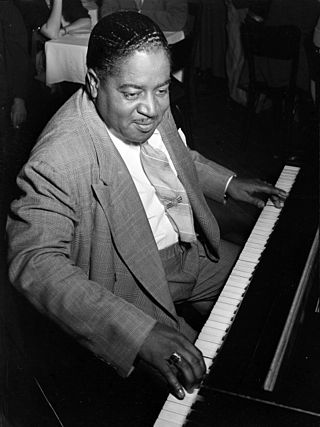
Kermit Holden "Pete" Johnson was an American boogie-woogie and jazz pianist.

Joseph Allen "Country Joe" McDonald is an American singer, songwriter and musician who was the lead vocalist of the 1960s psychedelic rock group Country Joe and the Fish.
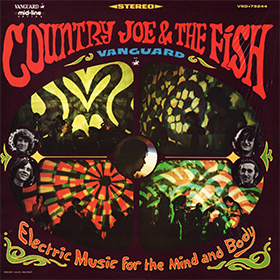
Electric Music for the Mind and Body is Country Joe and the Fish's debut album. Released in May 1967 on the Vanguard label, it was one of the first psychedelic albums to come out of the San Francisco Bay Area.

Joe Willie "Pinetop" Perkins was an American blues pianist. He played with some of the most influential blues and rock-and-roll performers of his time and received numerous honors, including a Grammy Lifetime Achievement Award and induction into the Blues Hall of Fame.
Boogie is a repetitive, swung note or shuffle rhythm, "groove" or pattern used in blues which was originally played on the piano in boogie-woogie music. The characteristic rhythm and feel of the boogie was then adapted to guitar, double bass, and other instruments. The earliest recorded boogie-woogie song was in 1916. By the 1930s, Swing bands such as Benny Goodman, Glenn Miller, Tommy Dorsey and Louis Jordan all had boogie hits. By the 1950s, boogie became incorporated into the emerging rockabilly and rock and roll styles. In the late 1980s and the early 1990s country bands released country boogies. Today, the term "boogie" usually refers to dancing to pop, disco, or rock music.
Huey Pierce "Piano" Smith was an American R&B pianist whose sound was influential in the development of rock and roll.
Bruce Barthol was an American musician, singer and songwriter. Born at Alta Bates Hospital, Berkeley, California, he was the original bass player for the psychedelic rock band Country Joe and the Fish, from its inception through November 1968. According to the Bethel Woods Center for the Arts, Barthol's departure from Country Joe and the Fish stemmed from a dispute with other band members over a potential performance at the 1968 Democratic National Convention protests.
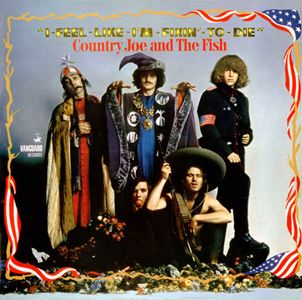
I-Feel-Like-I'm-Fixin'-to-Die is the second studio album by the influential San Francisco psychedelic rock band, Country Joe and the Fish, released at the end of 1967.
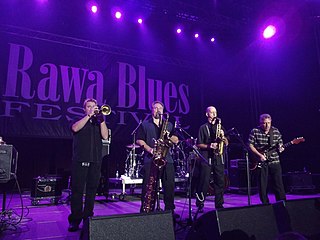
Roomful of Blues is an American jump blues and swing revival big band based in Rhode Island. With a recording career that spans over 50 years, they have toured worldwide and recorded many albums. Roomful of Blues, according to the Chicago Sun-Times, "Swagger, sway and swing with energy and precision". Since 1967, the group’s blend of swing, rock and roll, jump blues, boogie-woogie and soul has earned it five Grammy Award nominations and many other accolades, including seven Blues Music Awards. Billboard called the band "a tour de force of horn-fried blues…Roomful is so tight and so right." The Down Beat International Critics Poll has twice selected Roomful of Blues as Best Blues Band.

Gene Taylor was an American pianist best known for his boogie woogie style. Over a career spanning more than 50 years he accompanied many musicians, produced several solo albums and was briefly part of Canned Heat.

"Guitar Boogie" is a guitar instrumental recorded by Arthur "Guitar Boogie" Smith in 1945. It was one of the first recordings in the style later dubbed "hillbilly boogie" to reach a widespread audience, and eventually sold nearly three million copies. It was the first guitar instrumental to climb the country music charts, and then crossover and also gain high rankings on the popular music charts. "Guitar Boogie" has been interpreted and recorded by a variety of musicians. It is among the songs discussed as the first rock and roll record.
Joseph L. "Big Joe" Duskin was an American blues and boogie-woogie pianist. He is best known for his debut album, Cincinnati Stomp (1978), and the tracks "Well, Well Baby" and "I Met a Girl Named Martha".

William Paden Hensley, known as Washboard Willie, was an American Detroit blues musician, who specialised in playing the washboard. He recorded tracks including "A Fool on a Mule in the Middle of The Road" plus "Cherry Red Blues", and worked variously with Eddie "Guitar" Burns, Baby Boy Warren, and Boogie Woogie Red.

Together is the third album by the San Francisco psychedelic rock band Country Joe and the Fish, released in 1968. Country Joe McDonald had briefly left the band prior to the recording sessions. All of the band members contributed to the songwriting. Together is the most commercially successful album from the band.
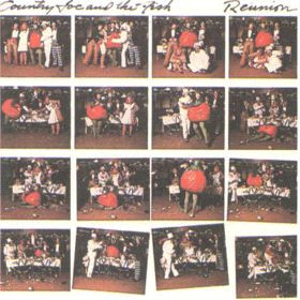
Reunion is the sixth studio album by the American psychedelic rock group Country Joe and the Fish, released in 1977. It constituted a reunion of the members of the 1967 band. It was produced by Sam Charters for Fantasy Records and recorded between January and April 1977. The music is not as psychedelic, and several tracks are country rock.

Here We Are Again is the fourth album by the psychedelic rock band Country Joe and the Fish. It was released in 1969 with the US catalog number Vanguard VSD 79299. It peaked on the Billboard 200 at number 48, and stayed on the charts for eleven weeks. Only "Country Joe" McDonald and Barry "The Fish" Melton remained from the original lineup, which had begun breaking up since the previous album. The past members would appear as guest musicians though. The songs were composed by McDonald and Melton.














